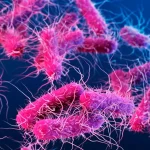Researchers are looking into how the spots on Dalmatians may be able to explain some of the diseases that affect animals.
Dr. Kit Yates, an investigator from the University of Bath, is a member of the group carrying out the four-year investigation on the formation and migration of coat pigment cells during embryonic development.
The results are expected to contribute to “a better understanding of a range of diseases” by clarifying the connection between immunological function and physical appearance.
Dr. Yates stated that researching Dalmatians “has the potential to enhance our understanding of human genetics – both our susceptibility to diseases and our evolutionary history.”
Scientists from Lancaster University and the University of Bath collaborated on the £498,000 project, named Spot the Difference, with advice from the Kennel Club.
Scientists are hoping to clarify that “genes involved in pigmentation play a role in the early phases of all mammalian life, affecting both developing immune systems and behavioural traits that emerge later.”.
According to Dr. Yates, their motivation stems from a “fundamental interest in animal pigment patterns” as well as the possibility of learning new things about “genetics, evolution, and our susceptibility to disease” in relation to humans.







